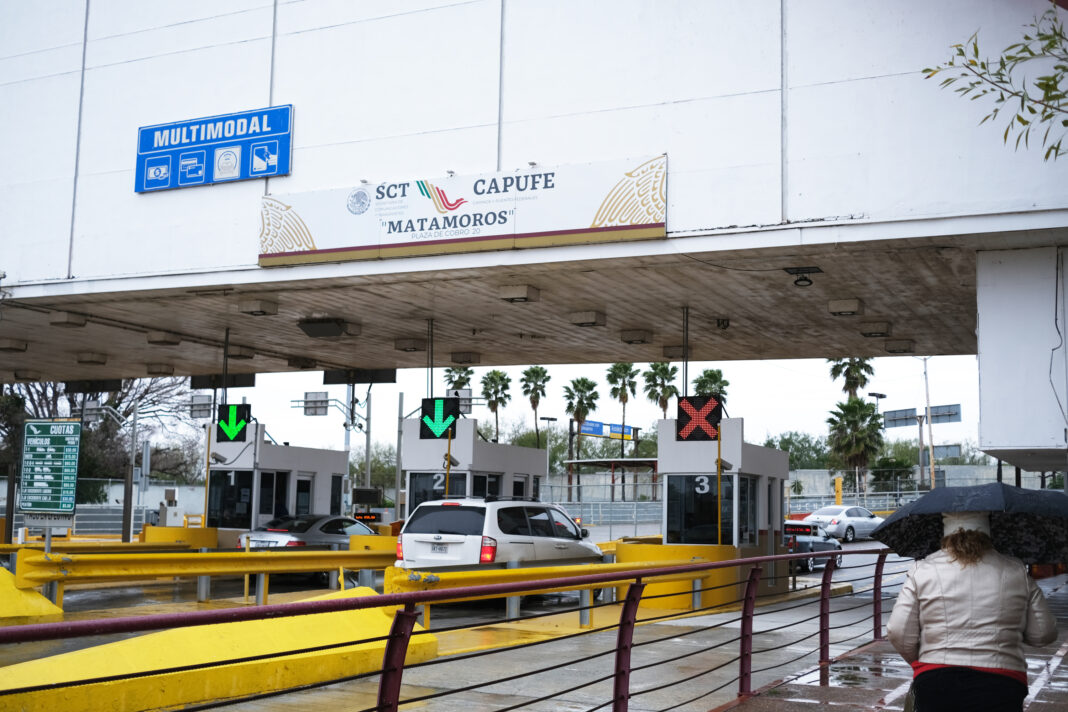The renovation of Cameron County’s Gateway International Bridge was initially expected to take 10 years to complete, if it ever received funding, though now that the money has been appropriate by Congress it looks like things could move faster, thanks to U.S. Customs and Border Protection and the General Services Administration moving the project up on their priority lists.
U.S. Rep. Filemon Vela’s office announced in August that the bridge was in line for $133 million in renovation funding through the Bipartisan Infrastructure Investment and Jobs Act, which was signed into law by President Joe Biden in November. The money was part of $3.75 billion for upgrades to Land Ports of Entry contained in the administration’s $1.2 trillion infrastructure package.
County Judge Eddie Trevino Jr. said he’s hoping the work can be done in five years and that demolition and construction should start within the next two or three years once GSA, which in charge of the renovation, chooses a design-build firm. The project will involve replacing virtually every structure at the bridge as well as expanding pedestrian and vehicle capacity, he said, noting that no major renovation has been done on Gateway Bridge since the Eisenhower administration.
Trevino said the pending renovation stemmed from conversations with Vela about what could be done to increase pedestrian capacity at the bridge, which has a single lane to accommodate more than 1 million northbound pedestrians annually, and that the scope widened from there. It involved a fact-finding trip to El Paso, where ports-of-entry have multiple lanes to handle the millions of pedestrians who cross each year, Trevino said.
“We knew we wanted to update and upgrade and expand the opportunity for pedestrians to cross at Gateway,” he said.
Vela, who is retiring from Congress after serving since 2013, said he worked with GSA for years to get the bridge project on the agency’s to-do list. On Feb. 25, GSA made an announcement of its own regarding the appropriation, but cited “more than $100 million” as committed to the project rather than $133 million, while offering the caveat that the $100 million-plus figure is a planning estimate “subject to change due to time and market conditions.”
Trevino said he couldn’t explain the discrepancy, but that GSA’s own feasibility study estimates the cost of the project to be somewhere between $180 million and $186 million.
“Those aren’t our numbers. Those are theirs,” he said. “Maybe in their mind this is the down payment on the project. I don’t know. Hopefully we’ll get a better explanation on it. … They know that if there’s a shortage in funding they’re going to have to locate (the additional money). I’m sure that they’re aware of it.”
The project will entail “replacing everything” and adding traffic lanes to cut down on often lengthy wait times for vehicle crossings, Trevino said.
“It’ll be the most modern, up-to-date port of entry on the southwest border,” he said. “We’re really excited about it.”
Vela said ports of entry from Minnesota to Michigan to Washington state, California to Arizona and El Paso will benefit from the infrastructure funding in addition to Brownsville.
“It’s just a small slice of the pie really, but just this small slice of the pie is going to account for a pretty significant economic stimulus in terms of the jobs that are created,” he said.
There’s also a border-security aspect to the renovation, since the new construction will bring new technology, and with it increased capability for detecting drug smuggling and other threats, Vela said.
According to GSA, in addition to modernizing the bridge to “increase pedestrian safety, improve traffic flow and decrease wait times, the renovation will allow CBP to better “deploy technology to identify high risk activity and shipments, combat drug trafficking and increase operational security.”
Vela said the bridge upgrade is long overdue and that he’s proud of his office’s role in finally making it happen.
“It’s pretty outdated,” he said. “I’ve taken a bunch of members of Congress through there over the years, including the first lady. I think it’s going to provide for a much more welcoming experience.
“We’ve had in my nine and half years (in Congress) significant successes, but I’m kind of looking at it as my crowning success here at the end of the term, because we’ve been working on it for so long. It’s been one of the top priorities for years in our office.”




